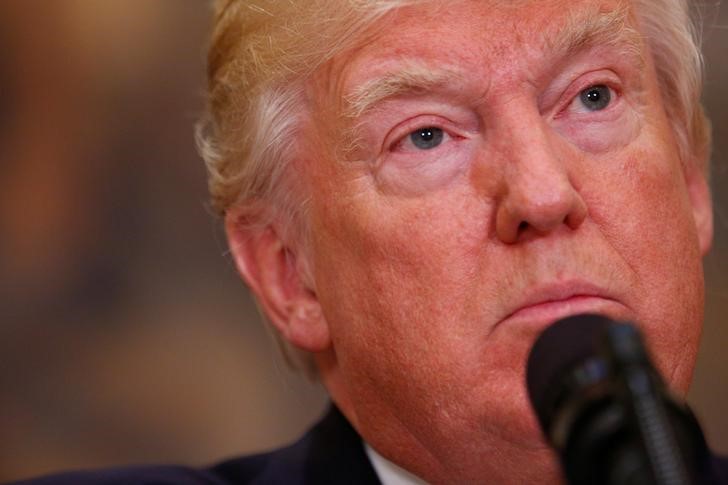By Tim Reid
MARION, Ohio (Reuters) - Dozens of Republican activists, county chairs and volunteers gathered at Franklin University in Columbus last month for the state's first-ever "Trump Victory Communication College."
Soon after, Sean Spicer, President Donald Trump's former White House spokesman, swept through the state for a series of party events. A Trump Victory regional political director has already been announced. So, too, has a Republican National Committee field director for the state.
And then there is Trump himself, who held two events in Ohio in March.
No Republican has ever won the White House without Ohio, and even as some Democrats question whether the state remains a competitive battleground after recent elections, the unusually early and intense efforts to secure Ohio for Trump show his party is taking nothing for granted.
The Trump campaign has crafted a re-election strategy aimed at putting Ohio beyond Democrats' reach early so the president can concentrate resources on the tougher contests in Wisconsin, Michigan and Pennsylvania, according to interviews with the campaign, party officials and political analysts.
Trump won Ohio by more than 8 percentage points in 2016 and is favored to win again in 2020. But he faces new headwinds - including jobs lost to an auto plant closure and energized Democrats who despise him - that could make his path to victory more difficult.
Jane Timken, the Ohio Republican Party's chairwoman, is determined to deliver Trump another victory.
She has led the state party since 2017, when Trump intervened to help her bid for the job during a purge of Ohio party officials deemed too loyal to former Republican Governor John Kasich, a Trump critic.
She spends her weeks traveling around Ohio's 88 counties to rally the party faithful. At Republican events last month, including one at the Marion Country Club, she and Spicer were greeted with a roar of enthusiasm and sustained applause at the mention of Trump's re-election bid and his "Promises Made, Promises Kept" message.
"The road to re-election for Donald Trump cannot go anywhere but through Ohio," Spicer told supporters at the Marion Country Club.
Riding to a Lincoln Day dinner at a winery in Dover afterward, Timken said support for Trump is unlike anything she has ever seen.
"I speak to donors, grassroots folks, and this year, people like Trump more than ever," she said. "People love that he's a fighter. It's Trump's party."
According to the Reuters/Ipsos national poll from May 29-30, 40% of adults said they approved of Trump’s performance, while 56% disapproved - but about 9 in 10 Republicans back the president.
UNPRECEDENTED EARLY INVESTMENT
Timken hired 10 staffers in 2017 as part of an unprecedented early investment in field operations for the midterm elections last year, where the party managed to hold on to all its Ohio congressional seats.
For the 2020 campaign, volunteers will be armed with a smartphone app that allows information gleaned from each voter they meet to be uploaded to a central database accessible to every county party and Republican candidates up and down the ballot.
"Our ground game is second-to-none," said Timken, who noted she and aides speak with the Trump campaign and the Republican National Committee by phone nearly every day.
Now an advisor and spokesman for the America First Action Super PAC backing Trump, Spicer is prohibited from working directly with the campaign but said he planned to travel the country as a "cheerleader" for the president and his policies.
America First recently announced it plans to spend $300 million in six states, including Ohio.
Democrats are divided on how much to focus on Ohio.
Priorities USA, the country's largest Democratic Super PAC, irked officials at the Ohio Democratic Party in March when it announced the state was not a top target for its 2020 spending, appearing to further erode Ohio's status as a competitive state.
Yet another Democratic Super PAC, the progressive For Our Future, last week called Ohio a battleground and said it planned to spend significant amounts in the state to try to defeat Trump.
David Pepper, Timken's counterpart at the Ohio Democratic Party, isn't ready to concede the state.
He points to the re-election in 2018 of Ohio's Democratic U.S. Senator Sherrod Brown. Pepper says that victory, and results in last year's congressional elections, show Democrats are gaining ground in the fastest growing areas in the state, including the big cities and surrounding suburbs - even though Democrats failed to gain any new House seats.
Pepper said Trump's plan to run on his tax cuts - which largely benefited corporations and the wealthy - and job growth after the closure of the General Motors (NYSE:GM) plant in Lordstown in March is a "dangerous" strategy.
The assembly plant closure was a "big blow" to Trump, especially after the president told workers in the area in 2017 that jobs would be coming back and not to sell their houses, said David Cohen, a professor of political science at the University of Akron in northeast Ohio.
Trump has criticized the closure. GM says 850 of the 4,500 who worked at the plant accepted jobs at another location, while others retired with pensions. GM Chief Executive Mary Barra on Wednesday defended the automaker's plan to sell the plant to an electric vehicle start-up.
Honda also announced the scaling back of production at its Marysville plant in central Ohio.
Cohen thinks the Lordstown closure, plus Ohio's soybean farmers getting hit by Trump's trade war with China, has tightened the presidential race ahead of 2020.
"Ohio could still be in play next year," Cohen said.
Trump's supporters in the state, however, believe it will back him again.
"President Trump drives people to the polls like no one I've ever seen," said Doug Wills, chairman of the Tuscarawas County Republican Party. "People are already calling, anxious to get their hands on Trump 2020 yard signs and hats."
